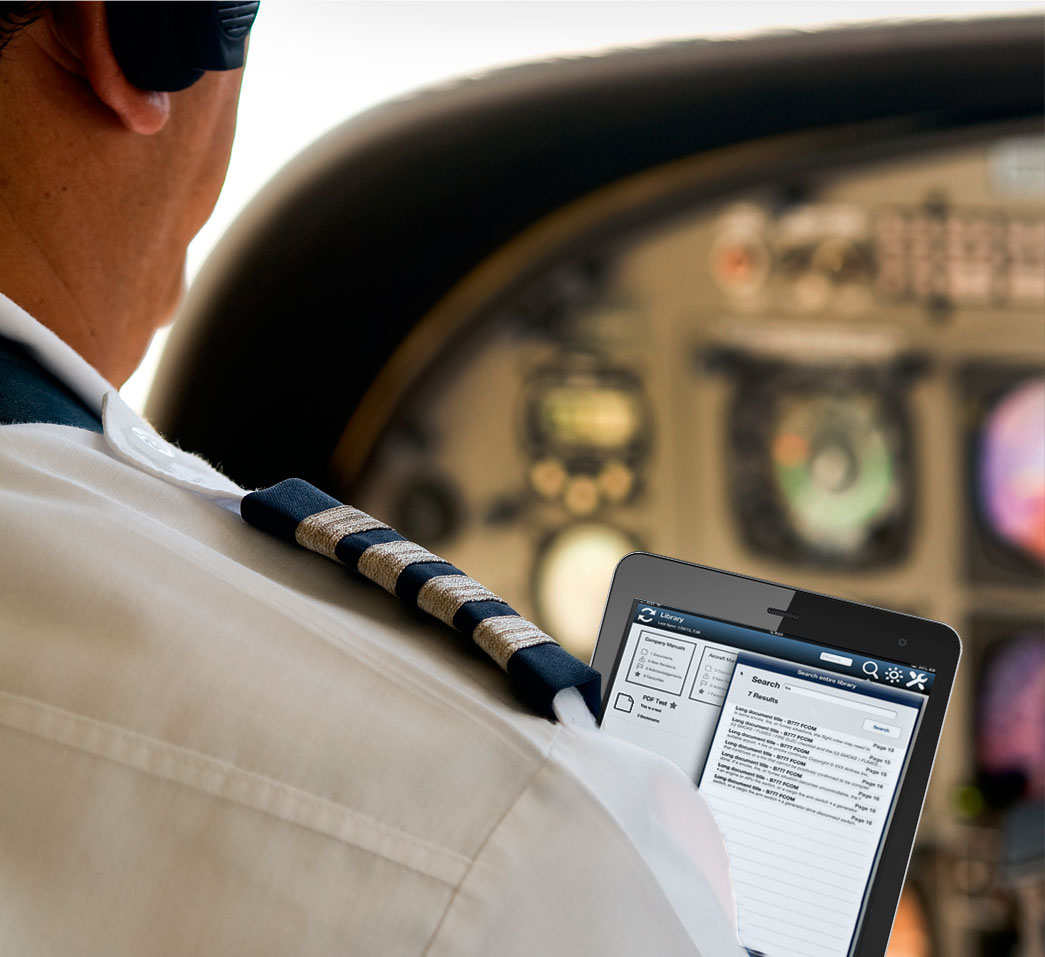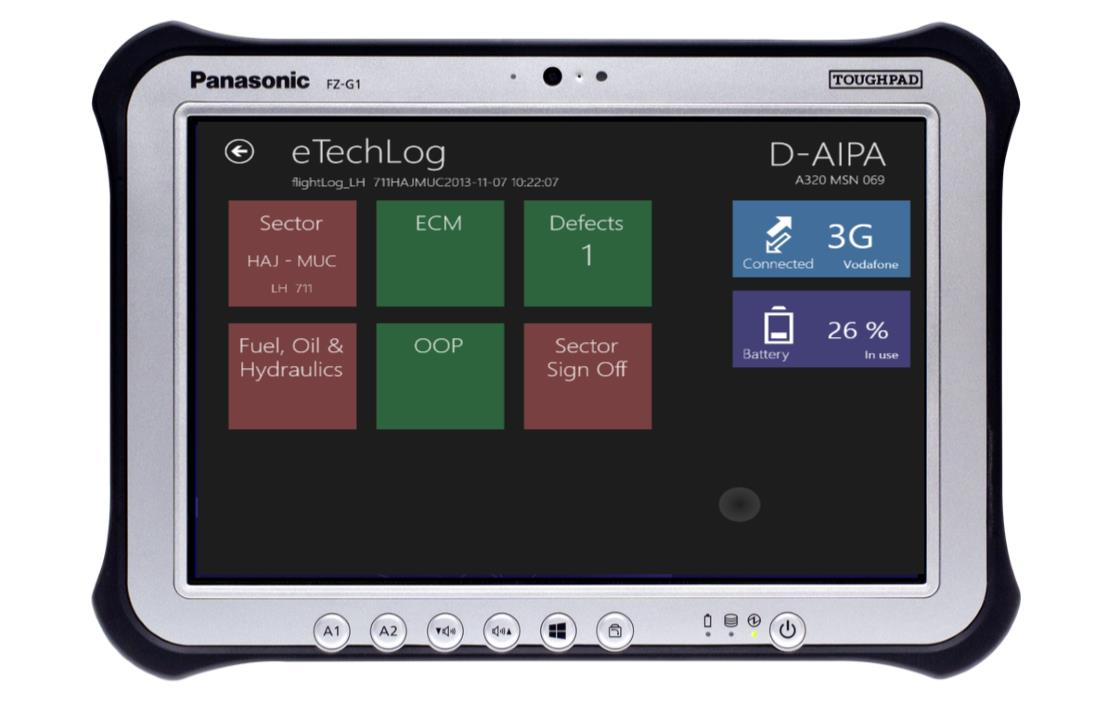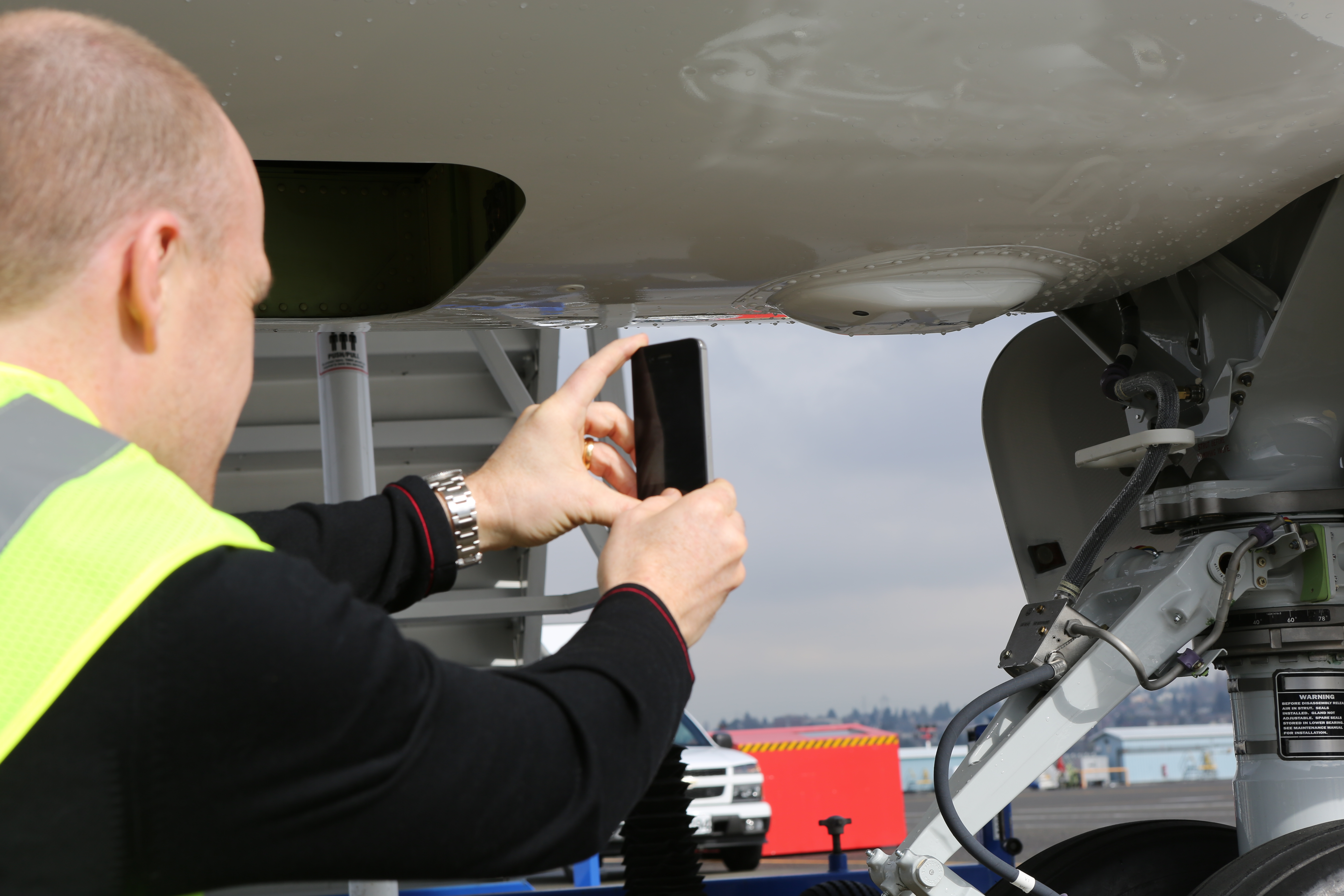Articles
| Name | Author | |
|---|---|---|
| Column – How I see IT | Michael Wm. Denis | View article |
| Also a business process – Air Works Case Study | Ravinder Pal Singh (Ravi), CTO and CIO, Air Works | View article |
| Lost in Translation? – Data Warehousing | Tim Alden, Commercial Director, Rusada | View article |
| Case Study: Facing up to the IT challenge of offshore helicopter operations | Brian P. McDonald, Principal & Managing Director, SFS Aviation Thailand | View article |
| Mobility Deep Dive – Future Mobility Platforms | Paul Saunders, Global Product Manager, Flatirons Solutions | View article |
Mobility Deep Dive – Future Mobility Platforms
Author: Paul Saunders, Global Product Manager, Flatirons Solutions
SubscribeMobility Deep Dive – Future Mobility Platforms
Mobility is the big thing today but, asks Paul Saunders, Global Product Manager at Flatirons Solutions, where will it go next: what is the current and future state of mobility in aerospace and what about wearable technology?
Brenda
Let’s start with an example that is well outside of what we do. My mother in law, Brenda, is the grandmother of my children and the worst technophobe. She’s also a writer who has written books which she sells on Amazon plus she does talks… and she decided she needed a website. Instinct suggests that if a family member asks you to build a website, run a mile: it must be like the worst client ever. But actually this turned out to be interesting because Brenda had a really good understanding of what she needed. When we sat down to work out what she needed, she said that it should be a responsive website. I thought that was incredible; a woman who’s a technophobe asking about responsive websites. But she’d thought about it; she understood her audience. Her readers were buying her books and reading them on a Kindle, so her website had to be designed first to work on a Kindle before laptop or tablet formats. But I found it instructive that a grandmother can make IT decisions based on what her users need?
Website pages
It got me thinking that there are a lot of airlines who, over the last couple of years have done a really good job providing their passengers with what they need in terms of mobility. Most airlines will have a mobile site and will probably have an app that does a good job catering to their consumers from that point of view; but how many have the tools – their portal, their infrastructure, their intranets – where their own internal consumers, their workers who are also mobile, have the same access to a responsive site?
What’s changed?
In the past couple of years, a lot has changed with technology: we’ve now got a completely different paradigm. With Kindles and iPads, they say that when you go on a train or a plane, whereas people used to talk with each other, they’re now buried in their content. I don’t think that’s completely true as this has always been the case; but the media for content has changed from paper to screen.
Create, deliver, consume
Back in the day, we had paper systems to create, deliver and consume content; and the aim was to deliver the right information at the right time to the right people. Whether it’s about producing manuals, getting them to the pilots by whatever means of delivery was used, getting them to hubs, engineers or getting training material; it’s always been about creating the right content and delivering it to the right people to consume in the way they want to.
In today’s mobile age, the consumer age, we’ve got a completely different set of expectations about how information is managed, we expect it to be delivered anytime, anywhere on any device and we expect to do it cheaper, faster and better. That’s how the paradigm shift has manifested.
Hardware
Let’s look at what’s going on with hardware. Remember the mantra… ‘If you want it bad: iPad. If you’re happy to wait: Windows 8.’ I first wrote this about two years ago (see Aircraft IT volume 1, issue 6 September 2012) and it was the case then that the iPad had the software; the likes of Jeppesen and Lido were early adopters and there was a whole pile of other applications coming out for iPad at the time. On the horizon we had Windows 8, seen as the silver bullet that would allow us to do everything, everywhere on every device… everything that we had always wanted. Well, the situation still is, I believe, ‘If you want it bad: iPad. If you’re happy to wait: Windows 8.’ We’ve got a lot of choice with iPad and not quite so much choice with Windows 8 but there have been announcements from the likes of Delta and some other airlines that they’re looking at Windows 8. It seems that, if you’re running a project or you’re a pilot or an engineer, and you’re leading that project, you’ll probably go for the sexy consumer product, the iPad. If you’re in IT and you’re used to dealing with legacy enterprise systems like Active Directory, Citrix and all the stuff that users hate, you’ll probably choose Windows.
Whatever you want to do and however you want to do it, it’s all about the use case. People ask whether they should have Windows or iPad or Android and it’s never an easy answer because it’s always about the use case. There’s a lot of interesting technology on the market now. Samsung with Android have every kind of form factor from under 2” for the Smart Gear watch through 7 inch and 10 inch tablets, right up to 20” monster devices. In Europe, Panasonic have done really well in the last year or so with a couple of big airline sales where people have chosen the 10” or 7” Toughpad but while I can see the appeal of these expensive ruggedized devices, I’m not sure of the need for them. The data on attrition rates, even for iPads, are really low because if you give employees something they enjoy using and allow them to put personal content on as well as company stuff, they’re going to take good care of it.
the iPad is a MacGuffin

The future
A look at the future of mobility shows trends and mega trends which, for the purposes of this article, are what I say are mega trends.
Mega Trend #1
Technology driven networks and the internet of things

This is going to be big in our industry. Even today, if a programmer wants to find out about a particular line of code, they Google it: they don’t read the manual. This is how things work today; this is how the Internet works: everybody Googles stuff. We don’t do that in our industry if something goes wrong with our aircraft we go and phone technical services and, if they don’t know, they’ll read the manual; and if that doesn’t know they’ll phone the OEM and two days later you might get an answer back while, all the time, the aircraft’s been grounded. But people are starting to work around that; Skyping colleagues and so on.
We’re going to embrace mobility and the Internet of things and use technology driven networks to help us do that. I don’t know what it will finally look like but that’s what’s going to happen.
Mega Trend #2
Identity
Identity is a big thing, and there are two things to consider…
Identity is a really precious commodity and people don’t take very good care of other people’s identity on the Internet, e.g. NSA, GCHQ. But we’re going to start taking seriously what happens to our own identity on line so we need to think about how identity is used for employees and the implications of that because in the same way that advertisers can target you on the Internet and can have cookies saved that help them target you in advertising and things like that, we’re going to want to do the same with employees in terms of things like time booking, rostering, pairing.
The other thing we’re going to see a lot more of is where an electronic signature is used. There’s a whole slew of ways an electronic signature can be included and the whole integrity behind that. Our industry’s built on integrity… high quality, high integrity very knowledgeable people. And as we try to build a leaner industry, conserve costs and resources there’s effort to deskill elements of our business and this whole identity thing is becoming a greater concern because we don’t want to be the guy who signs off on the aircraft that falls out of the sky somewhere.
Identity will be a big thing. Again, I don’t know what it’s going to look like but we need to see it coming. Technology OEMs are doing a lot of work in terms of capturing identity through biometrics. The latest generation iPhone has a finger print scanner: we can see a lot of wearable technology as well which will help identify things (see below).
Mega Trend #3
Machine learning
The last mega trend is associated with Machine Learning. A couple of years ago this might have been described as artificial intelligence but that term implies something that isn’t there. However, there’s a lot of research and development going on with machine learning in organizations like ours (Flatirons Solutions) and such as Boeing and Airbus where systems are being a lot more pre-emptive about what’s going on, about what people need. At the moment if you’re going through an IPC (illustrated parts catalog) and you type in a part number, you might have to select ‘I’m searching for a part number’ or similar. In the future, MRO systems will behave a lot more like Google; you’ll just type something in and the system will recognise it as being a part number rather than, say, a serial number. There’s a lot of work being done on machine learning which will impact on mobility in a big way.
Predictions that are not the future
Wearable technology
Maybe it’s because the genre is a derivative of the Bluetooth headset, which is a fashion accessory, it seems, reserved for the worst kind of loudmouth sales trolls, or because I’m just getting old and cantankerous, but I simply don’t get wearable technology. If the adoption of mobility in the work place has taught us anything it is that investing in a new technology without any real understanding of how it should be used is a waste of time and effort.
There are some appealing examples of very niche use cases, such as with assisting medical surgery or with helping those with disabilities, but I’m struggling to understand the wider consumer or business appeal for this kind of technology. Virgin Atlantic recently announced that they were experimenting with how Google Glass could enhance passenger experience, presumably in order to more efficiently access company CRM systems. This kind of forced innovation doesn’t represent a leap forward in customer experience, it just creeps me out at the thought of the overbearing invasion of privacy. Sure, we would all like for flight attendants to know our drinks preference, but whatever happened to just talking to customers?
Also, the idea of tracking employees and assets via RFID tags and other near field communication methods is not a new one. What activity trackers offer is an active device which can log in detail movements and activities whilst automatically synching with management software. This kind of device can offer much more scope than a passive RFID tag and could be used for more detailed activity and location tracking. It has implications for time booking, identity and location use cases. However personnel tracking can be a divisive subject for the work force and unions alike. I’m all for improving efficiencies of tracking resources, but as the cheaper RFID technology has not been widely adopted I don’t hold any hope for wearable activity trackers in the very near future.
Be like Brenda and think about a…
Responsive design;
Embrace the internet of things – all the stuff delivering data to you; and say…
No to google glass, there’s no need for it;
Don’t underestimate identity; and, finally, we need to think about mobility for…
Any device, any platform – delivering anything, anywhere.

Paul is a trusted technology specialist who has been working for and advising MROs, airline operators, OEMs, and software vendors since 1998.
He has unparalleled expertise in aviation software design and mobility, having worked on apps used by pilots and engineers all over the world.
Paul is often called upon for speaking and writing engagements and is a regular contributor to AircraftIT Operations eJournal, Aviation Week, and other publications. When it comes to the adoption of emerging technology in aerospace, particularly with regards to mobility, Paul is a heavy weight visionary and geek.
Comments (0)
There are currently no comments about this article.


To post a comment, please login or subscribe.